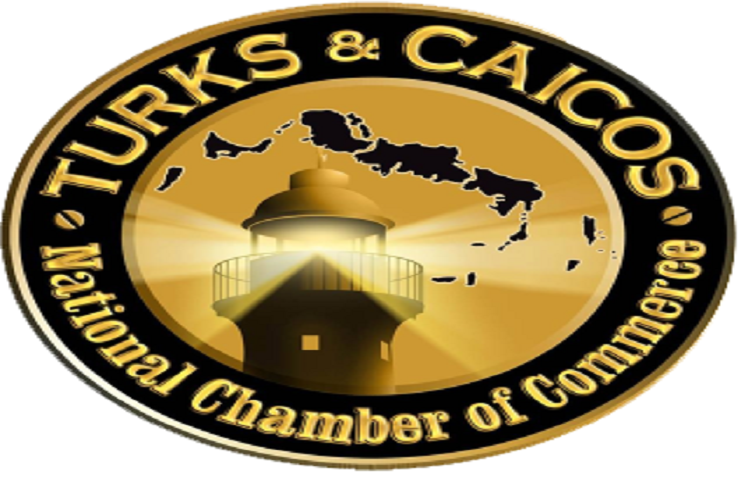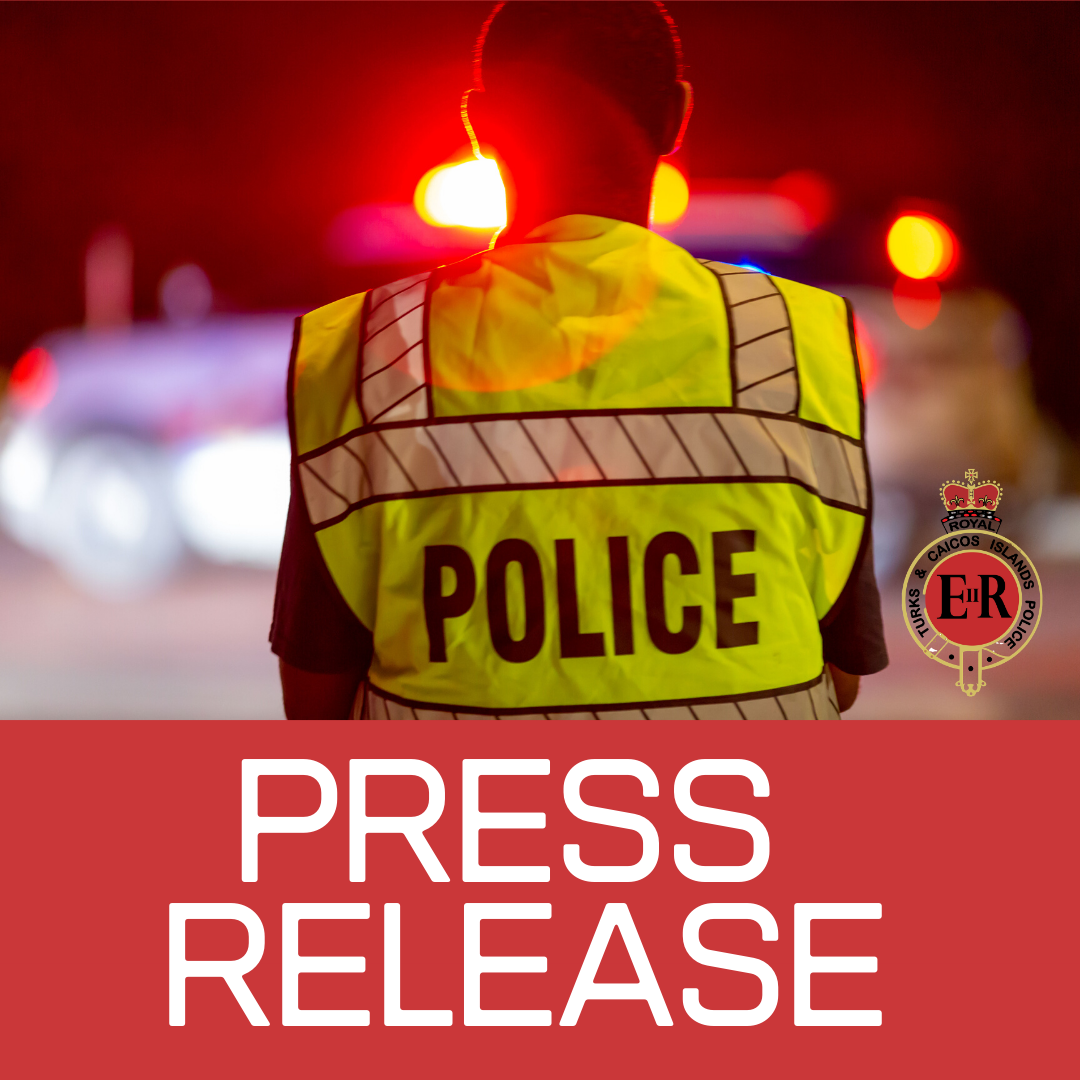News
Press Release Chamber of Commerce
Published
7 years agoon

#TurksandCaicos, September 15, 2017 – Providenciales –
After the Disaster . . . What Should I Do Now?
Information to Help Small Business Owners Make Post-Disaster Business Decisions
By Daniel J. Alesch, James N. Holly, Elliott Mittler, and Robert Nagy
University of Wisconsin-Green Bay Center for Organizational Studies
Published by the Public Entity Risk Institute On the Web at: www.riskinstitute.org
Public Entity Risk Institute
The Public Entity Risk Institute’s mission is to serve public, private, and nonprofit organizations as a dynamic, forward thinking resource for the practical enhancement of risk management. PERI pursues its mission by:
Facilitating the development and delivery of education and training on all aspects of risk management, particularly for public entities, small nonprofit organizations, and small businesses.
Serving as a resource center and clearinghouse for risk management, environmental liability management, and disaster management information.
Operating an innovative, forward-looking grant and research program in risk management, environmental liability management, and disaster management.
For complete information on PERI’s programs and information services, visit our Web site at www.riskinstitute.org.
To access a wealth of risk management intelligence, visit the Risk Management Resource Center, at www.eriskcenter.org, a collaborative Web site operated by PERI, the Public Risk Management Association (PRIMA), and the Nonprofit Risk Management Center (NRMC).
Public Entity Risk Institute
11350 Random Hills Road, Suite 210
Fairfax, VA 22030
Phone: (703) 352-1846
FAX: (703) 352-6339
Gerard J. Hoetmer
Executive Director
The Public Entity Risk Institute (PERI) provides these materials “as is,” for educational and informational purposes only, and without representation, guarantee or warranty of any kind, express or implied, including any warranty relating to the accuracy, reliability, completeness, currency or usefulness of the content of this material. Publication and distribution of this material is not an endorsement by PERI, its officers, directors or employees of any opinions, conclusions or recommendations contained herein. PERI will not be liable for any claims for damages of any kind based upon errors, omissions or other inaccuracies in the information or material contained on these pages. PERI is not engaged in rendering professional services of any kind, and the information in these materials should not be construed as professional advice. Users bear complete responsibility for any reliance on this material, and should contact a competent professional familiar with their particular factual situation if expert assistance is required.
Business Survival is not Assured by Reopening the Doors
During a PERI-funded research project, we worked with more than 120 small business owners and managers of not-for-profit organizations all across the country to understand what happens to them following various natural disasters.
We’ve talked with some a few months after the disaster, with some as many as seven years after the event, and, with still others, every year for five years after the disaster.
We’ve reached several important conclusions that should weigh heavily on any business owner’s decisions about what to do with his or her business in the aftermath of a major disaster:
First, we have concluded that disaster events cause problems for businesses unrelated to the amount of direct damage they sustain from the event and from related events, like fire following an earthquake.
Second, we found that, unless the business owner makes good decisions about recovery, the largest losses to the business come in the years after disaster and not from the direct damage of the disaster itself.
Third, we found that, following any large scale disaster in a community, things never get “back to normal.” The community almost always changes permanently, ______________________This article is a supplement to a research project report — Organizations at Risk: What Happens When Small Businesses and Not-for-Profits Encounter Natural Disasters — written by the same authors and published by the Public Entity Risk Institute (PERI).
The research project was supported with a grant from PERI. The complete report is available at no charge on the PERI Web site, at www.riskinstitute.org. It is located in the Publications, Tools, Resources section of the site, in the list of Disaster Management materials.
Printed copies of Organizations at Risk, also available at no charge, can be requested through the Web site, or by contacting PERI at:
Public Entity Risk Institute
11350 Random Hills Rd., Suite 210
Fairfax, VA 22030
Phone: (703) 352-1846
Fax: (703) 352-6339
Creating a new business environment in which doing business the old way often results in operating at a loss for years and, then, when all equity in the business is used up, going out of business.
Finally, we found that it is possible, if an owner takes the right steps, to not only survive a major natural disaster, but to achieve real business viability in the postevent environment.
Among the factors that significantly contributed to business failures are:
- The effect the disaster event has on the customer base.
- The kinds of products or services the business provides.
- The business’ inability or unwillingness to respond appropriately to the new, post-event environment.
- The overall financial strength and stability of the business before the event.
- The owner’s inability or unwillingness to recognize the options available.
What to Expect in the Weeks and Months Following the Disaster
Your personal life will become stressful and uncertain following the event, even if you did not lose anyone close to you in the disaster. You are likely to experience considerable ambiguity, particularly if both your home and your business were damaged. For many business owners, stress will come simply from memories of the experience. You, or members of your family, may experience difficultly sleeping soundly. Much of the stress will come because your primary source of income is gone, at least temporarily. Some stress will be passed on to you from stressed employees. There will be stress around insurance delays, questions about coverage, and settlements. You may find yourself stressed about things you wish you had done, but there is little to gain in “I wish I woulda . . .” laments. Finally, all the stress around the business and loss usually leads to increased stress at home.
In your business neighborhood, there will almost always be an underlying assumption on the part of business people, property owners, and public officials that “things will get back to normal soon,” but they will not. We found that there is often social pressure from other business people in the damaged area to get back into business and to make things like they were before.
You will receive little information about rebuilding plans from the city or from owners and much of that information will be contradictory or wrong. State and local governments may be slow to respond with needed variances and recovery policies.
Many people who lived in the damaged area and either lost their homes or experienced other losses will move away, many of them permanently. Volunteers and others will be there to help clean up, but they, too, will disappear as the physical evidence of the disaster is trucked away.
Fundamental changes in the community will already have begun. Neighborhood trends that had started before the event are likely to speed up. The neighborhood will change forever, even if the buildings are put back just the way they were before the event. A new set of relationships, new neighbors, and new business patterns will develop.
The businesses that survive will be those whose owners and managers understand and adapt to the new business environment.
Options to Consider and Questions to Answer Before You Spend a Lot of Money to Reopen Your Business
Perhaps the most difficult factor for a business owner to deal with is recognizing the available options. In our research, we found that many owners failed to see that they had alternatives available to them; in so doing, they severely limited themselves and their potential responses to the disaster. Too many business owners simply continued, after a disaster event, to do what they had done before the disaster event. Their failure to consider the available options made it difficult to respond appropriately to the new, post-event environment. Most of these businesses fell by the wayside.
However, a few entrepreneurs did consider the options available to them. In doing so, they were able to devise or, in some cases, they just happened upon, recovery strategies that enabled them to avoid almost certain failure. These strategies frequently led to profitable futures.
The suggestions included here for post-disaster business recovery are predicated on your willingness to consider the options available to you as a business owner and your desire to make informed business decisions.
We’ve put together, based on our research, a series of things to consider and questions to answer that will help you develop a sensible post-disaster strategy. That strategy is intended to increase the probability that your firm can become financially viable in the post-event environment.
FIRST, REALLY UNDERSTAND YOUR BASIC OPTIONS
After a major disaster, almost every small business owner says, “Wow, that was quite a bump in the road. Time to get back to business.” And then he or she continues doing the same things in the same way, assuming things will get back to normal.
Following major disasters such as a strong earthquake, a major hurricane, widespread flooding, rioting and civil disruption, or a devastating terrorist attack, things change forever. What that means is that your business environment is changed and that what worked well in the past may not work at all now, especially in your current location.
When a major disaster affects you, your financial survival depends on how well you make decisions in the new environment. One of the very first things you should do is identify the basic options that are available to you. It is not good enough to say, “Well, this business is what I do. It is the only thing I know.” You have to consider other things.
We think that, initially, you have at least three basic options available to you.
Option One – You can reopen your business.
Option Two – You can close your business.
Option three – You can (try to) sell or transfer the business to someone else.
Too often, in the stressful aftermath of disaster, a business owner chooses to reopen his or her business without considering or even knowing about the alternatives available, factors to consider, or the potential consequences of his or her actions. Some additional information about how to pursue each option, which may influence your choice of options, is provided below. This additional information should be studied before any decision is made. (The advantages, disadvantages and other issues to consider when deciding whether or not to reopen your business after a disaster are discussed in the next section of this article.)
Option One – Reopen Your Business
- You can finance your business reopening with company assets, personal saving, low-interest loans, traditional loans, insurance proceeds, investment, family loans, credit cards, and so forth.
- You can reestablish your business at the same location or you can relocate your business. (Some loans and grants have conditions that prohibit relocation.)
- You can reopen your business offering the same products and services you provide before the disaster event or you can change, in part or entirely, the products and services you provide.
Option Two – Close Your Business
- You can walk away.
- You can liquidate the business
- You can start a new business with new product/services or the same product/service you previously provided.
- You can go to work for someone else.
- You can retire.
Option Three – You Can (Try To) Sell or Transfer the Business to Someone Else
- You can sell or transfer the business to your children. (If they are interested in running a business.)
- You can sell or transfer the business to a competitor.
- You can turn over the business to a relative or former employee.
These options are not singular or mutually exclusive. For example, you may walk away from one business and start a new business, in a new location, that provides products and services, which may be the same or different from your previous business.
Very likely, you will be able to think of other options. The three basic options we’ve outlined are just for starters – something to get you thinking.
SECOND, ANSWER THESE QUESTIONS BEFORE DECIDING WHETHER TO REOPEN YOUR BUSINESS
What Happened and What Is Happening?
Make an effort to understand what happened and what is happening as a consequence of the event. This is a difficult assignment because everything will be in flux, surrounded in ambiguity, and changing rapidly. Information will be unreliable. That means that one quick look around will not be enough. The problem is that you need accurate, reliable information on which to make sensible decisions about your business in the post-disaster environment. You will have to be engaged in a continuous effort to know what is going on in your neighborhood, your business community, and your local jurisdiction.
What Happened to Your Customers?
If you are in manufacturing or wholesaling, it is likely that your customer base is geographically dispersed. Only a few of them may have suffered losses from the event. In that case, it is important for you to do what is necessary to ensure that you meet your customers’ continuing needs.
If you suffered significant losses and will have to be closed for some time, it is important to learn what your customers are doing during the time it takes you to reopen. If your customers did not suffer major losses, they may change their buying habits and you may have to fight an uphill battle to win them back. Do your customers still want or need your product or service? Can they afford it?
Whether it makes sense to reopen your business depends mainly on what happened to your customers as a result of the event. If all or most of your customers suffered large losses as a consequence of the disaster, there is little reason for you to reopen quickly, unless you have something they need desperately. For example, it usually makes sense for lumberyards and building supply, pharmacies, physicians, furnishings and appliances, construction, dry cleaning and laundry, and grocery stores to reopen quickly.
However, if you sell goods and services that come from discretionary money, your customers may not be able to afford what you have to offer as they attempt to pick up the pieces. We found that people who had big losses put off spending money at the optometrist, at specialty restaurants, for things like recreational gear, and for jewelry and expensive gifts. Sometimes, your customers may move away. In that case, reopening is like starting over.
How Much Did You Lose and Where Will the Money Come From to Reopen?
If you suffered losses and were not insured, where will the money come from to reopen? Most business owners we talked with used their life savings, borrowed from relatives, used their credit cards, got a little help from suppliers and/or customers, or got loans through the Small Business Administration or from conventional lenders. A few got loans or grants from local government. Do not expect any money from FEMA, the Red Cross, or other disaster assistance organizations – small businesses and small business owners usually are not eligible for that kind of assistance.
Before you decide to use your life savings or borrow money from organizations that require you to use your home and other personal assets as collateral, it makes sense to take a very serious look at your business prospects in the post-disaster environment. There is a very good chance that your old business plan is no longer viable, depending on what happened to you and your customers.
We talked with dozens of small business owners who used all their savings to reopen a business that went nowhere in the post-disaster environment. They lost their savings and the business. Often, reopening after a major disaster is like starting a new business. Banks and the SBA will probably be willing to loan you money to reopen based on your experience before the disaster, but, before you make that commitment, make sure you have a solid business plan for the post-disaster environment.
Before you reopen, understand fully that things will never be the way they were before. Last year’s business plan is dead as a dodo. It is time to conduct a new feasibility analysis and to rebuild your pro forma and cash flow analysis before committing any cash to the new venture. If you can reopen without putting any significant amount of money into the venture and you have good reason to expect your customers to be there, then go ahead. But, unless you have a service or product that people need desperately, expect that your business will not be what it was before the event for a long time.
In any event, it makes sense to be cautious. Be cautious about how you use your insurance proceeds; don’t confuse cash flow with investment. Be wary of taking loans that require you to use personal assets, like your home, as collateral. Be wary of taking loans that will be forgiven if you stay in the same business in the same location. You may be far better off moving to a new location.
If you are at or near retirement age, you will want to think particularly carefully about reopening the business. Many people we interviewed put their savings back into a business that did not survive the next five years. You may be better off liquidating your business assets and putting your money in safer investments. Sometimes, even if your alternatives look bleak, it still makes sense to walk away.
If you had insurance that covered most of your losses, you are in the minority of small business owners. Many small firms will have experienced uninsured disaster related losses from damage to their plant or equipment, their inventory, and to the building they rent or own. Many more lose money from uninsured business interruption in the chaotic period following the disaster.
How Strong Was Your Business Before the Event?
How Well Is Your Firm Positioned with Regard to the Dominant Trends in Your Industry? Even if your organization was doing well before the disaster, it is important for you to take a hard look at where your firm is with regard to dominant trends in the area where you do business. Retail patterns are, of course, changing. Small town, downtown merchants are having a tough struggle against giant chain retailers located on the outskirts of town. If your firm is positioned favorably with regard to industry trends, your chances of surviving a disaster are much better than if your firm is in an uphill fight against major trends.
Only you will know how strong your business was before the disaster. If you were losing out to the competition before the disaster, there is no reason to believe you can do better after the disaster. If your firm was doing well, growing and becoming more profitable each year, chances are you can do well after the disaster, provided you can retain your customers in the unsettled times after the event.
Are You Able to Give What It Is Going to Take?
It takes a lot of energy and commitment to start a new business. You know that. You’ve done it. Remember that, following a real disaster, it usually takes that same level of commitment and energy to revitalize a business that has suffered a disastrous event. Ask yourself whether you still have the drive needed to do it again. If so, good luck with your venture. If not, it makes a lot of sense to reconsider your options.
You may like

NASSAU, The Bahamas – Participants of the Ministry of Social Services, Information and Broadcasting’s Camp Inclusion, including the camp’s student advocates, recently toured Nassau Cruise Port in a move designed to produce multiple benefits for the children.
Camp officials said the tour was part of the “moving away” from the old tradition of keeping children with disabilities locked away at home, and towards greater social inclusion for persons with disabilities – especially children.
Facilitated by the Community Affairs Division of the Ministry of Social Services, Information and Broadcasting at the Flamingo Gardens Family Life Centre, the camp is a collaborative effort between the Ministry, its Community Affairs and Disability Affairs Divisions, the Bahamas Coalition of Advocates for Disability Awareness and Service (BaCADAS), and the National Commission for Persons with Disabilities (NCPD). The majority of the Camp Instructors are persons with disabilities.
The Camp is in keeping with the Global Family Day 2024 theme of “Embracing Diversity, Strengthening Families,” and is an extension of the Ministry’s continued efforts to take the lead in ensuring access and inclusion for all — particularly the community of persons with disabilities — in every aspect of society.
Children with different levels and types of disabilities, along with student advocates, participated. Its focus was to ensure that participating youth learn about living with mobility and intellectual disabilities, advocacy, inclusion and accessibility.
Mr. Townsley Roberts, Deputy Executive Secretary of the Secretariat of the National Commission for Persons with Disabilities, said the visit is expected to have a number of expected outcomes.
the visit is expected to have a number of expected outcomes.
“It was very important to get the kids out and for them to see parts of the island that they rarely get a chance to experience,” Mr. Roberts said. “It was also an opportunity for them to feel a part of the Bahamian society because many times they are kept at home or just in the classroom (and) so this gives them a chance to spread their wings; an opportunity to dream. You never know, something they saw today can spark their imaginations and some may become artists, want to work in the tourism field or even just to try and experience a cruise. The ability to dream, to feel a part of society, to feel included, is important to the growth of all children, including persons with disabilities.”
Mr. Roberts applauded officials at Nassau Cruise Port for agreeing to the tour, which he said also allowed chaperones to inform the student advocates of some of the aspects that makes a facility accessible and inclusive.
“We are so happy that the Cruise Port allowed us the opportunity to come and tour the facility. As the name of the camp goes, what we are promoting is inclusion — total inclusion in all aspects of Bahamian society including the culture, and the open spaces. We want to make sure that all spaces are accessible and one of the things we know, because we had the opportunity to inspect the cruise port, is that the Port is accessible to persons with disabilities. So why not bring the children – including the student advocates — here as a means of helping them to understand and to witness first-hand what accessibility means and how it, or the lack of accessibility, affects the lives of persons with disabilities.”
Mr. Antoine Munroe, a Camp Instructor and employee of the Disability Affairs Division of the Ministry of Social Services, Information and Broadcasting, said access and inclusion ensures that every person is able to achieve the same outcomes whether in social, educational, or employment settings, and are the best methods of ensuring that persons with disabilities are given the same opportunities to participate in society. He applauded the inclusion of the student advocates in the camp.
“It is a passion of my own to see young people included and exposed to the life of persons with disabilities. Being able to tour the facility gave me an understanding of how I can use my cane to move about with a little assistance and I thought that was very, very smooth. I congratulate those persons who were able to cause this to happen, and also the persons in charge of the Nassau Cruise Port. I think this is a very good step in the right direction,” Mr. Munroe added.
Release: BIS
(BIS Photos/Patrice Johnson)
Bahamas News
National Commission for Persons with Disabilities gauges ‘accessibility’ at ZNS, BIS as part of ongoing inspection schedule
Published
19 hours agoon
July 26, 2024
NASSAU, The Bahamas – Inspectors attached to the Inspectorate Division of the Secretariat of the National Commission for Persons with Disabilities (NCPD) conducted assessments of the facilities at the Broadcasting Corporation of The Bahamas, and Bahamas Information Services, Tuesday (July 23) as part of their ongoing efforts to ensure that all public facilities, and those private facilities that provide services to members of the public, are accessible for all.
Both entities fall under the remit of the Ministry of Social Services, Information and Broadcasting as does the Secretariat.
The team was headed by Mr. Townsley Roberts, Deputy Executive Secretary, Secretariat of the National Commission for Persons with Disabilities, and included Mr. G. Michael Ellis, Senior Inspector; Mr. Wesley Paul, Inspector; and Mr. Thorne Clarke, Inspector.
Deputy Executive Secretary Roberts said the inspections were two-fold.
“Today we are inspecting ZNS and BIS which are both a part of the Ministry of Social Services, Information and Broadcasting to ensure that they are accessible because it is our belief that we cannot ask the public to do the things required by law without first ensuring that our entities are also in compliance,” Mr. Roberts said.
“People need to understand that accessibility to persons with disabilities is just as important as it is to persons without a disability. We want to be able to go about your day-to-day business without any obstacles in our way.
“What makes us disabled is the built environment, the barriers in front of us. If you remove those barriers, then we can do many of the same things persons without disabilities can do, and sometimes better. So this is what we are about. We are trying to make The Bahamas a place for all persons (and) where it will be comfortable for persons with disabilities to be able to manoeuvre through buildings and other spaces with the same ease and comfort expected by everyone else.”
The inspection team conducted assessments of wheelchair ramps, bathrooms, office spaces, and parking and reception areas, and measured doorway and hallway widths, in addition to other spaces to ensure that the requirements as set out in the Persons with Disabilities (Equal Opportunities) Act, 2014, are met.
Mr. Ellis, who spent 34 years as a member of the Royal Bahamas Police Force before retiring as a Senior Police Officer and who brings that same knowledge of the law to his new role, said the inspections help to ensure that the community of persons with disabilities enjoy the same rights to accessibility as any other citizen.
“Persons with disabilities, including those in wheelchairs, persons with walkers, crutches and those who use other assistive devices such as canes, should be able to move around just like everyone else,” Mr. Ellis said.
“We were looking to make sure that there were accessible bathrooms for both males and females, to ensure that there are proper ramps and that the ramps are the proper sizes, to ensure that all of the offices are accessible and all of the other areas are accessible for persons with disabilities.
“The Act says whatever we, as able bodied persons can do, a person with a disability should be permitted or allowed to do the same without any hindrance. Our job is to ensure that these facilities are in compliance with the Act.”
Once inspections are completed, Adjustment Orders are sent to those facilities/businesses found not to be in compliance with the Act, advising them of any faults, and providing a time-frame for compliance.
(BIS Photos/Anthon Thompson)
Release: Bahamas Information Services
PHOTO CAPTIONS
Header: – ZNS/BCB
Left to right:
1: G. Michael Ellis – Sr. Inspector (NCPD)
2: Thorne Clarke – Inspector (NCPD)
3: Townsley Roberts – Deputy Executive Secretary (NCPD)
4: Wesley Paul – Inspector (NCPD)
5: Carlton Smith – Chief Security Officer (BCB)
Insert: – BIS
Left to right:
1: Elcott Coleby – Director General (BIS)
2: Wesley Paul – Inspector (NCPD)
3: Townsley Roberts – Deputy Executive Secretary (NCPD)
4: Carlton Smith – Chief Security Officer (BCB)
5: Thorne Clarke – Inspector (NCPD)
6: G. Michael Ellis – Sr. Inspector (NCPD)

***MEDIA RELEASE***
July 23rd, 2024.
Around 10:59 am, the Police Control Room received a call of gunshots at a location along the Millennium Highway, Providenciales.
Officers of the Royal Turks and Caicos Islands Police Force were dispatched and, based on preliminary investigations, were told that the occupant (s) of a red Suzuki Swift was at a business place when another car pulled alongside it, and the occupants started shooting.
The driver of the Swift drove off while the other unidentified vehicle sped off in a separate direction. 
Officers found the Swift abandoned near Miracle Close, Blue Hills, shortly after.
Based on investigations, no injuries were reported.
This remains an active investigation.
The RT&CIPF is asking anyone with information or CCTV footage of the shooting that may assist the police with enquiries to contact 911, the closest police station, the Serious Crime Unit at 231-1842, or call Crime Stoppers at 1-800-8477 and anonymously give any information.
Additionally, persons are being asked to download the Crime Stoppers P3 app.
TRENDING
-

 Caribbean News7 days ago
Caribbean News7 days agoCayman Relief Mission to Hurricane hit CARICOM nations
-

 Caribbean News7 days ago
Caribbean News7 days agoCARICOM raising profile and priority of its Migration Policy; curbing challenges ‘a tall order’
-

 Caribbean News1 week ago
Caribbean News1 week agoHurricane Help; Money donated to Jamaica, Barbados, St Vincent & the Grenadines, St Lucia and Grenada
-

 Caribbean News7 days ago
Caribbean News7 days agoJamaica’s Hurricane Recovery Efforts Bolstered by Donation from Cayman Islands
-

 Bahamas News7 days ago
Bahamas News7 days agoPrime Minister Davis: Cannabis Reform Compendium 2024 ‘a long time coming’
-

 News7 days ago
News7 days agoWhat the new UK Prime Minister had to say about the Rwanda Deportation Plan at his first press conference
-

 Bahamas News1 week ago
Bahamas News1 week agoBahamas Celebrates 51st Independence – ‘United In Love & Service’
-

 News7 days ago
News7 days agoTurks & Caicos’ E.J Saunders part of Election Observer team in UK on July 4





